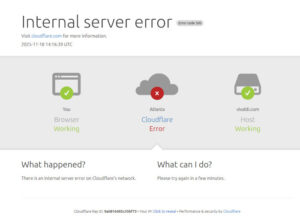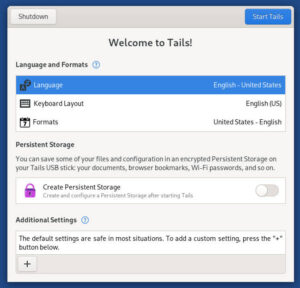Friday FOSS Week in Review
Pretty fonts coming to Linux?
Most of us here at FOSS Force have been using various flavors of Linux for thirteen years or so. During that time we’ve gotten used to reading comments on the ugliness of fonts in Linux, especially when it comes to browsers.
We’ve never particularly understood this or noticed any homeliness in regards to Linux fonts. Of course, we’ve also never been able to understand reviewers who write about how unexciting they find fonts like Times New Roman or Ariel to be. In our experience, Hunter Thompson is brilliant and compelling no matter what font is being used to render his rants, while Tom Wolfe is a pompous ass, no matter how humble a typeface used to display his insufferable prose.
If you’re one of the people who sits up nights worrying about ugly fonts–refusing to read Dan Brown’s latest effort, for instance, not because Mr. Brown is a horrible writer but because you can’t overcome the subpar font rendering on your Android device, you’re problems are about to be solved, if we understand the news coming from Google and Adobe. According to an article published last Friday on PCWorld, the two companies have teamed up to fix some of the problems that plague how FreeType, the font software used in Linux and iOS, does it’s display work:
“Specifically, Google and Adobe on Wednesday released into beta the Adobe CFF engine, an advanced Compact Font Format (CFF) rasterizer that ‘paves the way for FreeType-based platforms to provide users with richer and more beautiful reading experiences,’ as Google put it in an online announcement on the Google Open Source Blog.”
Over at the aforementioned Google blog we’re offered some gee-whiz graphics of the new engine at work, as well as this explanation:
“Text rasterization produced by the new Adobe CFF engine in FreeType is dramatically more faithful to the typeface design. The improvements include better stem widths and placement, fewer dropouts, dramatic reduction in the ‘blobbiness’ of Chinese, Japanese, and Korean, and more even visual weight. While all of this may sound somewhat technical, the advantages are not, and will benefit technical and non-technical users alike. These improvements lead to more beautiful looking text that is easier to read.”

“Jane Doe” appeals IMDb verdict
We’re not sure exactly why we believe this item belongs on a FOSS news page, but it’s raised a number of questions in our minds and we figure if we’re going to be confused we might as well confuse you too.
On Monday we learned from Reuters that Huong “Junie” Hoang, the actress who sued website IMBb.com because they (gasp!) revealed that she’s evidently fortysomething years old, has appealed the verdict that didn’t go her way. The article didn’t say on what grounds she’s filing the appeal, only that it’s being filed with the Ninth Circuit court of appeals.
“Hoang filed suit against IMDb anonymously in October 2011, claiming that IMDb damaged her career by revealing her age after she signed up for the site’s subscription service, IMDbPro. Hoang claimed that the site had obtained her age when she used her credit card to sign up for IMDbPro.”
Wait a minute! IMDb has a subscription service? How does that work exactly? Do they run a boiler room of telemarketers phoning Hollywood A-listers and pitching them? That, we’d like to hear…
“Well, Mr. Dicaprio, you can do what you want. If you think your career can take the hit of not being given the treatment that goes with our Pro service, then by all means just settle for our free listing…”
We also can’t figure out the treatment Ms. Hoang is getting. Do you seriously mean that after shelling out real honest-to-goodness USA bucks, the Pro treatment doesn’t even allow for a little creative license when it comes to age? Are you implying that lying about age is against IMDb’s ethics, but listing her alongside real actors like Susan Sarandon or Robert Redford isn’t? Come on, guys, take a lesson from Marshall Field and “give the lady what she wants.”
| [yop_poll id=”11″] |
By the way, if you’re trying to remember where you might’ve seen Ms Hoang on screen, according to her IMDb listing she’s been in such critically acclaimed classics as Disorders: The Dark Side of the Human Mind and the TV series Exotic Dancers of Houston. If you missed those, never fear; she’s got three projects in post production.
Hmmm… We just noticed… According to IMDb, she’s been involved in 100 projects since 1992. Seven of those projects began after IMDb destroyed her chances of having a career in 2011. Something’s not adding up here…
Why schools require the use of Redmond’s products
Ken Starks, who does tons of good work getting computers in the hands of kids who need them with HeliOS and Reglue, on Monday posted a guest blog on the Linux Advocates website.
Did you ever wonder why schools are so insistent about requiring students use Microsoft products when there’s plenty of free stuff available? Knowing academic types as we do, we’ve always suspected it’s because the educated idiots who run our school systems don’t realize there’s an alternative. It turns out, according to Starks, our suspicions might be true.
“Said teacher had no idea what Google Docs is. I had to physically walk her through a Gmail install over the phone and guide her to the Google Docs page. After a bit over 1.5 hours in conversation, the light finally came on and she absolutely gushed over the marvels of technology and Google in particular.…
So, as I understand it…the necessity for Microsoft Office has been lifted and kids with no Internet connection will be allowed to use LibreOffice. She even gives instructional handouts as to how best to get LibreOffice and install it.”
Keep up the good work Ken!
Nokia shareholders ready to riot
On Tuesday, Reuters reported on shareholder unrest in Finland. It appears the shareholders of Nokia have been reading the riot act to Chief Executive Stephen Elop, demanding he turn the ship around. They’re also suggesting that Nokia’s exclusive deal with Microsoft perhaps isn’t such a good idea:
“Many shareholders at the annual general meeting in Helsinki said Elop should reconsider his 2011 decision to switch to the phone operating software made by his former employer Microsoft, which has left the company scrambling to get back in the race from a standing start with its new Lumia range of smartphones.
“‘You’re a nice guy … and the leadership team is doing its best, but clearly, it’s not enough,’ one shareholder, Hannu Virtanen, told Elop. ‘Are you aware that results are what matter? The road to hell is paved with good intentions. Please switch to another road,’ he said.”
Nokia investors have good reason to be upset. Back in 2000, when the company was the unbeatable leader of the cellphone world, shares of Nokia were going for 65 euros. On Tuesday, when the shareholder meeting took place, shares were trading at 2.72 euros.
CEO Elop pretty much told the investors there would be no move away from the company’s exclusive deal with Microsoft. As far as he’s concerned, Windows is the way to “compete with competitors like Samsung and Android.”
Some big shareholders disagree:
“Juha Varis, senior portfolio manager at Danske Capital, which owns Nokia shares, said Elop may be making a mistake.
“‘He has closed doors,’ he said in a phone interview. ‘They don’t have new ideas now. Their fate is all in Windows Phones.'”
We see it this way. Microsoft was the iceberg. Nokia was Titanic. It’s time to man the lifeboats. Women and children first.
Secure Boot comes to 64-bit ARM
We’re certain to hear more about this in the weeks and months to come. On Wednesday, PCWorld informed us that ARM tablets are now safe for 64-bit Windows RT.
“The UEFI (Unified Extensible Firmware Interface) Forum on Wednesday announced that its boot firmware specifications will now support ARMv8, a 64-bit processor architecture announced by ARM in 2011. ARM’s processors are used in most smartphones and tablets, and chip makers such as Nvidia and Samsung are expected to release 64-bit processors for smartphones and tablets in the future.
“Microsoft on Windows 8 and RT requires PCs and tablets to carry a feature called Secure Boot, which prevents a system from being hijacked. The Secure Boot environment is based on UEFI firmware and ARM has already said it is working with Microsoft to develop a 64-bit version of Windows for ARM-based devices. However, it is not yet clear when the OS will come out.”
Our bet is that it’ll be a long, long time before we see a 64-bit version of RT made available to consumers. Microsoft is probably going to drop the RT version of Surface, and OEMs aren’t going to want to touch it until there’s a decent list of apps available for it–which will probably be never.
If you don’t believe us, you might want to read what Toshiba had to say about RT at a product launch in Sydney, Australia this week.
Web servers under attack
It might be time to batten down the hatches on your open source web server. According to Ars Technica the black hats have been busy installing malicious back doors on sites running Apache, nginx and Lighttpd web servers. This news comes from antivirus vendor Eset, which says that over 400 web servers have been infected so far, 50 of them being sites with a top 100,000 raking by Alexa.
“‘This is the first time I’ve seen an attack that will actually target different Web servers, meaning the attacker is willing to create the backdoor for Apache, Lightttp, and nginx,’ Pierre-Marc Bureau, Eset’s security intelligence program manager, told Ars. ‘Somebody is running an operation that can victimize various Web servers and in my opinion this is the first time that has ever happened. This is a stealthy, sophisticated, and streamlined distribution mechanism for getting malware on end users’ computers.'”
Protecting a server against this attack evidently isn’t easy. The attackers are quite stealthy, and are using sophisticated techniques to keep from being detected.
“…Cdorked also stores most of its inner workings in a server’s shared memory, making it hard for some admins to know their sites are infected. Compromised systems can receive up to 70 different encrypted commands, a number that gives attackers fairly granular control that can be remotely and stealthily invoked.
“In another testament to the ambition of its operators, Cdorked relies on compromised domain name system servers to resolve the IP addresses of redirected sites. The use of ‘trojanized DNS server binaries’ adds another layer of obscurity to the attacks, since they make it easier for attackers to serve different sites to different end users.”
With that we’ll leave you to stew in your paranoia while you run every kind of test on your server that comes to mind. We’ll be back with another week-in-review next Friday. Until then, may the FOSS be with you…



















